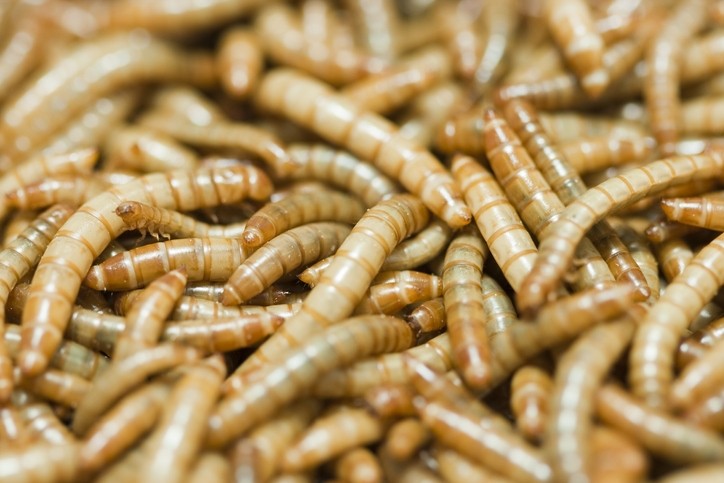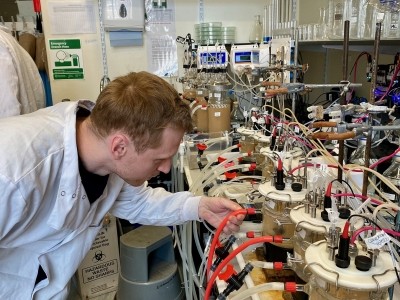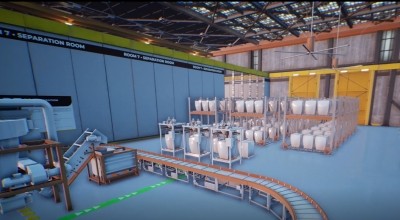US mealworm producer prioritizing sustainable energy and zero-waste practices at its new facility

Earlier this month, it announced the formal opening of the 50,000-square-foot facility.
Instead of building something brand new, from the ground up, Beta Hatch took a brownfield approach, looking to use existing infrastructure and revitalize it. The Cashmere facility is an old juice factory that was sitting idle and empty for near on a decade.
Along with that refitting model, the company said its production process relies on a zero-waste system - the mealworms feed on organic byproducts and the end ingredients are used in feed and fertilizer.
The plant is funded in part by the Washington State Department of Commerce Clean Energy Fund. Through proprietary HVAC innovations, excess heat from network equipment at a neighboring data center is captured and used as the main source of heat to control the environment in Beta Hatch’s grow rooms.
A vertical farming approach, added the company, enables a huge yield from a minimal footprint.
Virginia Emery, founder and CEO of Beta Hatch, told us:
“Sustainability is one of the major claims that insect producers make though that entirely depends on the way they are operating. And we have taken some very intentional steps in relation to our production.
“If you look at the costs and the impact of every new piece of steel you would have to put into a new facility, there are a lot efficiencies and savings with the brownfield approach. All of our electricity comes from renewable energy sources and there are also efficiency gains from using waste heat.”
The company’s location, close to a large volume of apple processing, means it can use byproducts from that sector such as cores as one of its rearing substrates: “By careful site selection, some of our feedstocks travel less than two miles.”
The company is also using dry feedstock, sourced out of Washington state, a byproduct of mainly wheat milling operations, said the CEO.
And it has “a lot of optionality” in terms of rearing substrates. Projects are underway with several types of feedstock producers, focused on feasibility testing to determine whether Beta Hatch can scale up their waste, continued Emery.
Egg production milestone
Beta Hatch had been running a smaller scale, ramp up production unit at the Cashmere site since November 2020. It started operating the flagship around December 2021 and for the last six months it has been scaling up the biology.
“We have been focused on building the breeding population, which is the most difficult part of the whole process. We now have a large adult population and some good solid egg production, and we are working on building out the growing part of the process.”
It has been investing in human resources as well. “The team has more than doubled in size since August last year, so we are well positioned for further growth.”
The plan is to build a new independent facility this year, one that is focused only on growing larvae. “We are just securing financing for that.”
That build fits into Beta Hatch’s long-term goal of scaling up operations by using a hub and spoke model. The Cashmere facility would serve as the hub, producing eggs, while growing sites will be located in close proximity to sources of feedstock.
In terms of what kind of products those decentralized locations would produce, she said that frass and whole dried mealworm require minimal processing and can easily be shipped from such sites.
“There is a high probability that we will be able to process the protein powder and oil products in a decentralized way as well. If a customer needs a more customized ingredient, the whole dried ground products would be shipped to a processing location for further refinement.”
Salmonids trial
Beta Hatch is currently focused on the production of whole dried insects, for use with backyard birds - its protein and oil production is at the more trial stage.
The company has recently run a trial in salmonids, which it anticipates should be published this year and will be part of a dossier for regulatory approval of mealworm in salmonids.
“That data showed successful replacement of fishmeal, with inclusions of up to 40%. That is where a lot of our protein and oil is going right now, into development work.”
As well as salmonids, the company is working with the wider industry to have frass approved for use in feed application and on extending mealworm ingredients for use in the pet food and poultry sectors.
In addition, its R&D team is exploring other ways insects can be used such as in the manufacturing of pharmaceuticals, enhancing vaccine production, for example.








